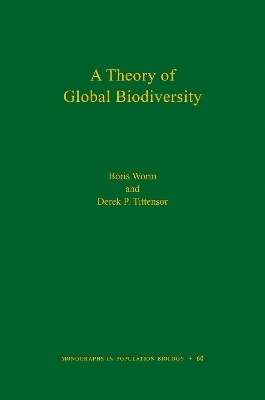
A Theory of Global Biodiversity
Princeton University Press (Verlag)
978-0-691-15483-1 (ISBN)
The authors show that global patterns of biodiversity fall into four consistent categories, according to where species live: on land or in coastal, pelagic, and deep ocean habitats. The fact that most species groups, from bacteria to whales, appear to follow similar biogeographic patterns of richness within these habitats points toward some underlying structuring principles. Based on empirical analyses of environmental correlates across these habitats, the authors combine aspects of neutral, metabolic, and niche theory into one unifying framework. Applying it to model terrestrial and marine realms, the authors demonstrate that a relatively simple theory that incorporates temperature and community size as driving variables is able to explain divergent patterns of species richness at a global scale.
Integrating ecological and evolutionary perspectives, A Theory of Global Biodiversity yields surprising insights into the fundamental mechanisms that shape the distribution of life on our planet.
Boris Worm is Killam Professor of Biology at Dalhousie University. Derek P. Tittensor is adjunct professor of biology at Dalhousie University and senior marine biodiversity scientist at the United Nations Environment Programme World Conservation Monitoring Centre.
Foreword 5Overview of Snakes 7Snakes' Venom 25Where Do Snakes Live? 31Snakes' Enemies 33Conservation Measures 34Snakes in Captivity 35The Species 37Snake Classification 38The Snakes of Europe, North Africa and the Middle East 43Families Typhlopidae (blind snakes) and Leptotyphlopidae(slender blind snakes) 44Family Boidae (boas) 56Families Colubridae and Lamprophiidae (colubrid snakes) 66Family Colubridae 67Sub-family Colubrinae (terrestrial and arboreal colubrids) 69Sub-family Natricinae (semi-aquatic colubrids) 207Family Lamprophiidae 224Sub-family Lamprophiinae (house colubrids) 225Sub-family Psammophiinae(Montpellier snakes and allies) 227Family Elapidae (cobras and sea snakes) 252Family Viperidae (vipers) 264Sub-family Viperinae (true vipers) 265Sub-family Crotalinae (pit vipers) 362List of Snakes of the Western Palaearctic 366Recommended References 372Index of English Names 375Index of Scientific Names 377List of Photographers 379
| Reihe/Serie | Monographs in Population Biology |
|---|---|
| Zusatzinfo | 51 b/w illus., 9 tables |
| Verlagsort | New Jersey |
| Sprache | englisch |
| Maße | 155 x 235 mm |
| Themenwelt | Sonstiges |
| Naturwissenschaften ► Biologie ► Evolution | |
| Naturwissenschaften ► Biologie ► Ökologie / Naturschutz | |
| ISBN-10 | 0-691-15483-X / 069115483X |
| ISBN-13 | 978-0-691-15483-1 / 9780691154831 |
| Zustand | Neuware |
| Haben Sie eine Frage zum Produkt? |
aus dem Bereich


